#American distillery whiskeys
Explore tagged Tumblr posts
Text
Holiday Gift Guide 2024
With the holidays approaching are you wrapping up your shopping? It is always my goal to get my shopping done early. Then I can enjoy the fa la of the holidays, thus my holiday gift guide! This is my 3rd year of compiling my gift guide and sharing my giving favorites! The Perfect Calendar Everyone needs a calendar! While I use my phone calendar to jot down my upcoming appointments, I like to…
#Agricultural Treasures Guidebook#American distillery whiskeys#Amy Chambers#Antique Tractor Calendar#Apple Watch#Bad Sweater#Becky Combs#Bible verse#books#bowl cozys#branded clothing#calendar#California#charity#Charles Freitag#Christmas Tractor#collectors#Compass for Kids#Dana Jelink#denim wine holders#events#exercise#Farm World#Fitbit#gardens#George Rishel#gift of time#Green Magazine#Guero#Guero Whiskey
0 notes
Link
Whiskey lovers, rejoice! Ole Smoky Distillery has just released their Tennessee Straight Bourbon Whiskey nationwide. Discover the rich caramel and smoky flavors crafted to perfection. Join the Tennessee whiskey tradition today and elevate your spirits collection with this remarkable addition.
0 notes
Text
Old Rip Van Winkle 10
Review by: Raygun Wasn’t planning to review this, but was out at a restaurant for dinner and saw it on the menu. Had to ask the price, and when it turned out to be fairly reasonable, I decided I had to get a pour. The baby of the Van Winkle line at 10 years. Couldn’t tell what year it was from, but from the fill level it had been open for a while, so maybe 2021 or 2022. Reviewed from a bar pour.…
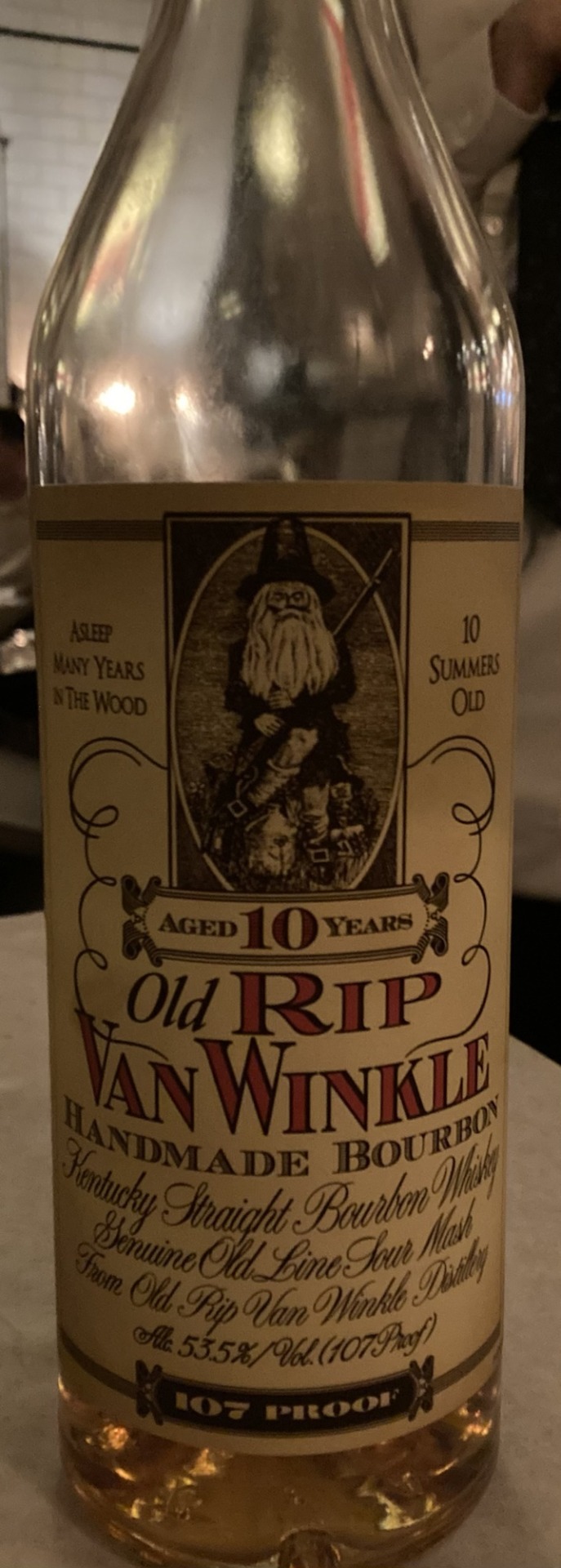
View On WordPress
#American Whiskey Review#Bourbon#Bourbon Review#Buffalo Trace Distillery#Old Rip Van Winkle#Rated 85-89#Raygun#Van Winkle
0 notes
Note
My deep dark desire for a distillery au wherein each force is a competing distillery and you yeet an expert taster reader in there who is in charge of judging each whisky and ranking them. Either they are pulling out all the stops on your tour and treating you like a princess or doing the opposite and threatening you to rank them the highest :')
Mhairi, I am the worse person to ask about whiskey, my parents have delicious smelling ones, fruity and spicy ones, but taste wise? I gag like there’s no tomorrow, especially gin!! I hate gin. The only thing I can stomach so far is sweet, coffee and cream flavoured Baileys Irish Cream. (I know there’s Irish whiskey in it, but it’s only 17% compared to the 40% of any other whiskeys)
Eau De Vie Cw: Alcohol drinking, whiskey taste, tell me if I missed any.
Whisky had always been your favourite, your little secret that you shared with your closest friends alone —your penchent for judging whiskeys and bourbons alone, managing to include rum and brandy in rare occasions. So when you were approached by a known figure in the Whiskey industry that acted as the face for many distilleries across the world, you couldn’t turn down the offer when you were given so much in a simple deal.
You were responsible to drink and rank many popular brands by taste and smell alone, the only person delegated to become the judge. You were given the privilege of taking home a bottle of each brand after this competition, another reason to accept it. So you signed the contract without a second of hesitation, shaking her hand to conclude the deal before she left you squirming with excitement in your office home.
You were flown from your city to a calm part of the Scottish countryside, a chalet overlooking the Scottish highlands and its green beauty. This was the quaint house you would temporarily live in with the rest of the team orchestrating this friendly competition, leaving the connecting house up the cliff side to the different distilleries. From what you’ve heard, Kate Laswell - Kate you called her after a few meetings that had fully bloomed into a friendship of alcohol connoissoir - the participating teams were the British company 141 - who in coalition to Chimera and the ULF - would represent their alliance, the American Shadows, the multi-national KorTac and the Russian brewery Konni. They were all popular brands distilling whiskey and brandy in their own countries, creating a plethora of tastes and sensations that would explode on your tongue after a few sips.
You were ecstatic, your mouth salivating at the simple thought of tasting the finest whiskeys from around the world, but you had a few days to rest and tour the side of Scotland you were shipped to. What you expected to be calm and mild-mannered men and women from their side of the world to meet and eat with refined etiquette, was shattered the second you peered through the door after walking down the connecting path from your chalet to their house.
They were loud, rambunctious in the very sense of it, loud and jovial, hurling insults and hissing out jeers at one another. It was a dogfight between brewers, like cats and dogs. You felt like a stranger, gawking at the group hurling words at one another until it all stopped, the open living room falling in silence when they heard you drop your bag on the polished wood. You’ve never seen humans move so fast until the second after the silence, scrambling to clean the room up and wooing you with their compliments and sweet pleasantries to appease you.
They gave you a tour of the house, the rich wine cellar that was open to you whenever you wanted a drink, the wooden patio that had it’s own lounge and bar, and the various rooms in the mansion-like chalet. They all vied for your attention, ripping one another’s throat to have a second of your attention, kissing up to you with sweet compliments and even sweeter praises.
The Brits - well, three English and one Scott - were a good mix of mature and zealousness, low voices and near-overwhelming figures with their broad shoulders and stocky mass. They came with other people to represent their company: Farah and her devoted Alex from ULF, and the crude Nikolai and Krueger from Chimera.
The Shadows were American, the most American you’ve ever seen, energetic and determined to win you over, and the CEO, a man with a southern accent and a seductive smirk, swiping you off your feet with pet names that made you fluster.
KorTac had as many accents as they had people of different countries, both men and women skilled in multiple languages and conversing so fluently that you started to question if you were on the same planet.
Konni was rough on the edges, their leading figure as scheming as he was gentlemanly, his thin lips letting out the most vicious praises to have you squirming under his dark gaze and unmoving determination for the win.
Days later, you met them at the compound farther down the road, away from the beauty of the coast and cliff, a long table exposing their finest to you. Poured in a cups, one with ice and another without, they were left for you to decide which would win the prize for both straight and on the rocks. Today was the day you would nominate one as the best, standing higher than everyone else without bias despite the times they rendered you a flustered mess and made you unendingly grateful for their help.
Your pallet exploded with flavour every time you sipped on a different brand, eyes rolling to the back of your head with the deliciousness of every bottle. 141 brought three bottles of their aged whiskey: a smoky Scotch Whisky made in the same Highlands you were tasting it, the bitter spiciness of rye whiskey from the American branch of the ULF - credits to Alex for introducing it - and the woody and fruity aroma of Chimera’s whiskey. Shadows had brought - unsurprisingly - their most popular types of whiskey to the table: Bourbon made in their own distillery in Kentucky, a sweet and mellow sub-type of their first one and the smooth flavour of their wheat whiskey. KorTac had a large variety to it’s collection: a floral tasting whiskey that outmatched Hibiki Harmony, a nutty sensation of a bottle made in Ireland and the rich and peaty on of a danish-made bottle. And finally, three Russian bottles from the biggest distillery in Russia: a sweet and smoky bottle, a second one with rich malt and honey, and a third focusing on aroma with it’s spicy odour and fruity taste.
They were all so delicious, if you had these bottles when you working at the bar, mixing concoctions for paying clients, you would’ve been overjoyed, but those days were long gone, your priority standing elsewhere than fulfilling your dream. Truthfully, you didn’t know who to give the medal, the flavours so vast and unique. Perhaps they wouldn’t mind if you took a second or third sip just to be sure.
Part 2
Taglist: @sae1kie @yeoldedumbslut @bvxygriimes @distracteddragoness @konigsblog @havoc973 @im-making-an-effort @daisychainsinknots @0alk0msan @danielle143 @dont-mind-me-just-existing-sadly @tuttifuckinfruttifriday @kaelysia @notspiders @velvetsoulweaver @petwifed @aldis-nuts @randominstake
#x reader#cod mw2#cod mw2 x reader#ghost mw2#konig mw2#soap mw2#gaz mw2#price mw2#nikolai mw2#farah karim#alex keller#horangi#kortac#specgru#konni group#shadow company#phillip graves#sebastian krueger#mw3 makarov#Distillery AU#Distillery cod
180 notes
·
View notes
Text










Nathan "Nearest" Green (c. 1820 – unknown), incorrectly spelled "Nearis" in an 1880 census, was an American head stiller, more commonly referred to as a master distiller. Born into slavery and emancipated after the American Civil War, he taught his distilling techniques to Jack Daniel, founder of the Jack Daniel's Tennessee whiskey distillery. Green was hired as the first master distiller for Jack Daniel Distillery, and he is the first African-American master distiller on record in the United States
#nathan nearest green#black tumblr#black literature#enslaved#tennessee whiskey#whiskey#black history#black excellence#black community#black history is american history#jack daniels#civil war
53 notes
·
View notes
Text

Exciting whisky news that can be stressing out the day 😂

First, look at Beyoncé's new rye whiskey brand SirDavis. The rye whiskey, which is a whiskey distilled with at least 51% rye grains, has been ‘finished, blended and bottled’ in Texas 🐎 - Beyoncé is from Houston, Texas. It’s being made by Houston’s Buffalo Bayou Distilleries.
Beyoncé whiskey is in collaboration with LVMH's Moët Hennessy. SirDavis (named Beyonce's great-grandfather) has been created with Dr Bill Lumsden and goes on sale next month. LVMH's wine and spirits division is looking to expand in the American whiskey market.

The firm behind Glenmorangie and Ardbeg has worked with the global superstar on her rye whiskey.
Someone, please pass me a dram 🥃
#Beyoncé #SirDavis #LVMH
Posted 20th August 2024
@imahalfemptykindofgirl Any similarity is purely coincidental! 😂 and cheaper Priced $89.99 per bottle
22 notes
·
View notes
Note
Drinking Anon here.
This is what I was talking about, the Nomiai: https://www.nomunication.jp/japans-business-drinking-culture/
I knew it was more of a Japanese business 'ideal' tradition. I was just wondering if it extended to school teachers. The idea that you "HAVE" to go drinking if invited otherwise its an affront to someone's honor.
....alright, having looked at the website, here is my critical analysis of this:
This guy, Whiskey Richard, who 'has been exploring the Tokyo cocktail scene since 2008' may have a basis for what he's saying but please keep in mind the following:
He's in Tokyo, where the drinking scene AND business is larger comparably, and it's easier to find drinking buddies and older colleagues who may want to pressure you to go
He has clearly made a business of explaining 'Japanese drinking culture'. His main site is about advertising distilleries and reviewing them. He didn't write this article only because he wanted to Share The Deep Japanese Lore with foreigners. He's angling for a specific type of feeling. A feeling that helps buy what he's selling.
With all that in mind and our reasonably angled Skeptic hat cocked (a hat you should always have on, btw, so long as it is not glued to your head) let's review the rest of it.
Does Japan have a culture of drinking with coworkers? Yes.
Are nomikai a unique event that has a specific structure different to a standard 'out with the lads for a few beers' type scenario? Yes, absolutely. It's a more structural event.
Do Japanese businessmen take advantage of a more casual environment like a bar or izakaya to suss out who is a genuine person and who might be a pain to work with?
I believe yes. This is not a far stone to throw.
Are you going to be affronting someone's 'honor' by refusing to go drinking with them?
Absolutely fucking not. And if they think so, they're a shitnugget.
It also should be noted that the author correctly writes that this is specifically a salaryman business thing rather than something that affects all areas of the workplace. He does start with 'If you're in Tokyo on business...' after all.
Sure, your business partner may invite you to go drinking with them to try to get an idea for your non-professional side. That's no different than someone inviting you to a business lunch. I think the business side of things is more important here than the alcohol element, though. The point is that if you're in a foreign country and someone invites you to join them in a social event that takes place in a traditional restaurant, turning down the invite may indicate that you're not really that invested in the relationship.
And most people will reasonably understand if you have a real excuse, or don't really drink. Especially these days. Hell, I work in a Japanese office and I get invited to nomikai and often turn the invitation down because I have an hour drive back home and no way of getting back if I'm drunk. And I've never gotten flack for it, nor has anyone ever suggested I've dishonored them for it. If I was seeking new employment and was invited out for drinks, I might try to make that happen, if only to satisfy the social request to meet up. ...I also enjoy a drink every now and then.
Like I said, the article in question isn't necessarily wrong... but I think it goes a little too hard, digesting every single detail and milking it for all the 'mysticism' it's got instead of presenting it through a reasonably comparable lens of Western drinking culture.
All I'm saying is... look if I had a potluck catering company and I needed to sell my stuff to Japanese people in the US, you bet your ass I'd make a site about how Sacred the potluck is to the Americans and how important it is to bring The Correct Thing. So I respect the hustle. But I think anything about The Complete and Utter Uniqueness of Japan should be taken with a grain of salt.
147 notes
·
View notes
Text
16 Black Innovators Who Changed Food Forever
Macaroni and cheese. Ice cream. French fries. Jack Daniel's whisky. Frozen foods in general.
We wouldn't have any of the above foods, plus many others, were it not for Black food innovators and figureheads that have made significant contributions and altered the way we eat and make food today.
Below are just some of the stories of these incredibly talented and inspiring individuals. Some of these names came from research via the New York Times and Food and Wine, but we've also included historical sourcing and context for each person as well. You can click on their names to view those original pieces.
Nathan "Nearest" Green
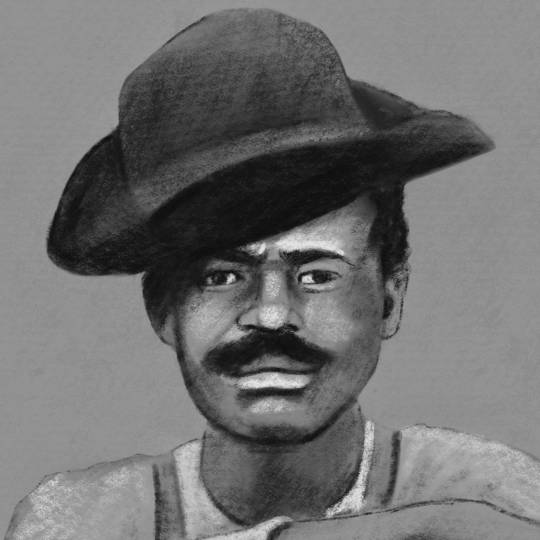
Known as "Uncle Nearest," Nathan Green was a skilled distiller who mastered the "Lincoln County" process. This method of distilling is thought by food historians and whiskey experts alike to have been brought in by slaves, and uses charcoal to filter and purify foods. The "Lincoln County" process, in particular, uses sugar maple charcoal to filter bourbon.
Green trained hired hand Jasper Newton Daniel (known to the world as "Jack Daniel") while working on a priest's distillery in Lynchburg, Tennessee. Daniel eventually made him the first master distiller of Jack Daniel's, the famous Tennessee whisky many people drink today.
While Jack Daniel's shares the story of Green on their website, an all minority-led whisky brand named "Uncle Nearest" continues to build upon his legacy with spirits that use the same distilling technique, but feature Green's name on the bottle.
youtube
While Thomas Jefferson is sometimes credited with bringing foods like mac & cheese and ice cream to the United States, Hemings was the one who actually learned to make them. A slave in the ownership of Jefferson prior to his presidency, Hemings traveled with him to France in 1784 specifically to learn the art of French cuisine.
Hemings became the first American trained as a French chef in history as a result, bringing back several dishes to the United States. French fries, ice cream, macaroni and cheese, creme brulee, French meringues, and French whipped cream are just a few examples. These dishes and others would be incorporated in Hemings' signature half-French, half-Virginian style of cooking he became renowned for.
Hemings would later also cook one of the most famous dinners in American history: the one between Thomas Jefferson and Alexander Hamilton that settled who would pay for the Revolutionary War and established Washington, D.C. as the United States' capital. He eventually was freed by Jefferson in 1796.
Zephyr Wright
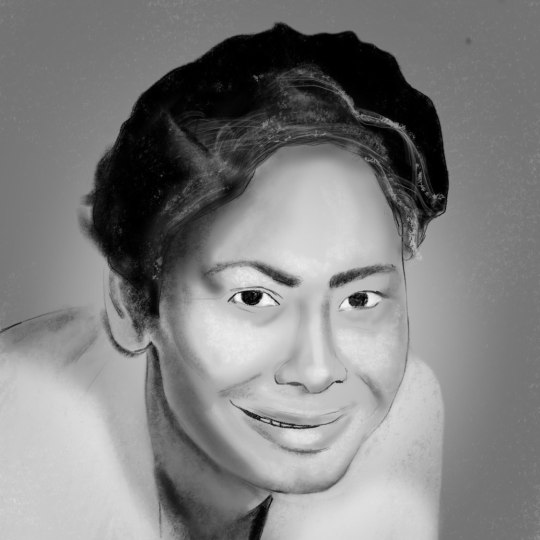
Zephyr Wright was the personal chef for President Lyndon B. Johnson and his family for over twenty years. It was her cooking that made the Johnson household a popular one for D.C. dinner parties.
Wright would follow Johnson to the White House during his tenure, and was in charge of the home cooking in the White House kitchen. She would also temporarily cook all meals, including VIP ones, in between the tenures of two White House Executive Chefs.
Wright is thought to have heavily influenced Johnson's support for the Civil Rights Act of 1964,. Wright was known to have spoken up to the President during his time in Congress about the injustices she faced road tripping between Texas and D.C. during congressional recesses, saying that she was not allowed to use the bathroom in areas she was driving through, and couldn't stop off and eat at restaurants. President Johnson reportedly used some of her stories to convince Congress to sign the bill. He would also give her a White House pen when the act was signed into law.
Leah Chase

The Queen of Creole Cuisine, Leah Chase was the heart and soul of Dooky Chase's restaurant in New Orleans across seven decades. Known for her fried chicken, red beans and rice, gumbo, and other classics, Chase started out in the 1940s when she got a job as a server at a restaurant. She eventually took over the helm and made it a safe haven for anyone to come and eat at.
Dooky Chase's was known as one of the few places that it was publicly okay for races to mix at, since the cops wouldn't bother activists inside the restaurant. Thus, leaders of the Civil Rights Movement, including local leaders and national ones like Martin Luther King Jr., would often strategize while eating there.
Chase would go on to serve presidents like Barack Obama and George W. Bush, along with Associate Supreme Court Justice Thurgood Marshall and other influential figures. Disney has even made a movie with a character inspired by her: Princess Tiana of Princess and the Frog.
Abby Fisher
Around the early 1880s, Abby Fisher was known for her award-winning pickles and the Mrs. Abby Fisher Pickle Company in San Francisco. She had at least 35 years of cooking experience, some estimates had it, and the awards she won for her food reflected that.
However, Fisher is probably best known for publishing one of the first cookbooks ever authored by an African-American woman. The book, called What Mrs. Fisher Knows About Old Southern Cooking, contains over 160 recipes and uses the dictated words of Fisher herself.
The cookbook surged in popularity in the late 20th century when a publisher began reprinting it in 1995. Today, it offers a window into these early recipes that places like museums try to recreate for guests to sample.
Edna Lewis

Edna Lewis became a legend while she cooked at Cafe Nicholson in Midtown Manhattan starting in 1949. Her fame and Southern recipes led to guests like Marlon Brando, Eleanor Roosevelt, and Salvador Dali showing up for dinner. After stepping away from the chef's role (as an active partner) in 1952, she would lecture at the American Museum of Natural History while working as a chef and private caterer.
Lewis would later become inspired to write her first cookbook as demand for them grew in 1972. She was one of the first African-American women from the South that would publish a cookbook that did not hide her name, gender, or race. She would go on to publish more in the future, eventually becoming known as the Grand Dame and Grand Doyenne of Southern cooking.
Larry James and Jereline Bethune
The Bethune family, to this day, runs Brenda's Bar-Be-Que Pit in Montgomery, Alabama. Open since 1942, the restaurant would become an important hub for those in the Civil Rights Movement.
After Rosa Parks infamously refused to give up her seat on a Montgomery bus, Larry James and Jereline Bethune were instrumental in using their restaurant to organize bus boycott efforts around the city. As the movement continued and literacy test laws (meant to curtail the Black vote) were introduced, Jereline would also quietly hold lessons teaching other African-Americans how to read. They were then able to pass these literacy tests and go out and vote.
Alfred L. Cralle
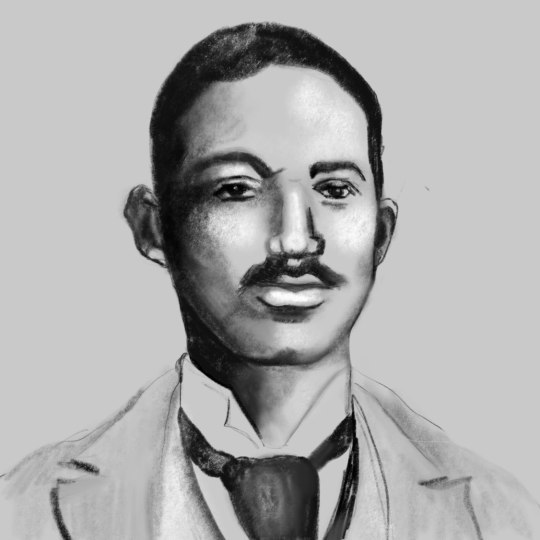
Ice cream today would not be the same without the work of Alfred Cralle. Born just after the Civil War, he had an affinity for mechanics as a young age, and would go study at Wayland Seminary, a school set up after the Civil War to educate newly freed African-Americans.
Cralle would go on to work as a porter at a drugstore and a hotel in Philadelphia, and developed the idea of the ice cream scoop while watching people struggle using two different spoons to get the ice cream into cones. Cralle's mechanical inventional, which is the basis of how ice cream scoops work to this day, was invented in 1897.
Cralle would also become a successful promoter of businesses in Philly, and was the assistant manager of the Afro-American Financial, Accumulating, Merchandise, and Business Association in Pittsburgh.
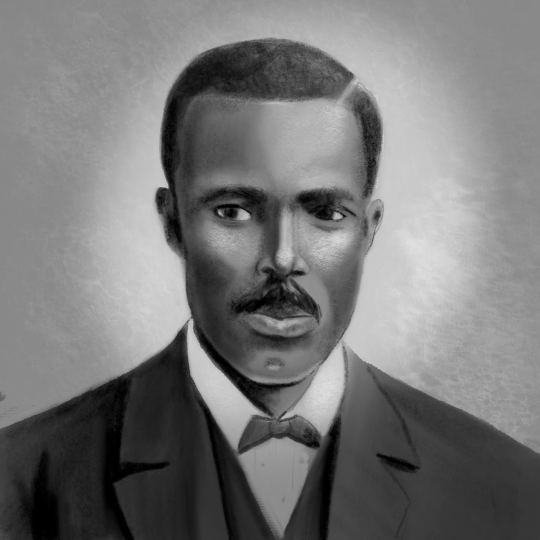
Ever heard the story of how potato chips were invented to spite a customer at a restaurant? George Crum was the chef at said restaurant, the Moon Lake Lodge resort in Saratoga Springs. A customer came in around the summer of 1853 wanting extra-thin French Fries, frustrating Crum to the point he sliced them as thin as possible, fried them in grease, and sent them out.
The chips became a big hit, eventually becoming known as "Saratoga Chips." While Crum never patented the dish, he did open his own restaurant, "Crumbs House," that served a basket of them at every table.
Chips wouldn't become a grocery product until 1895, and the concept of bagged chips didn't show up until 1926.

Joseph Lee was one of the most influential people when it came to industrializing the way we make bread.
Having worked in a bakery from a young age, Lee eventually became the owner of two restaurants in Boston, as well as a hotel and a catering company. Looking to find a way to minimize bread waste, he eventually invented a machine that would convert day-old bread into breadcrumbs. Patented in 1895, he later sold the rights and the breadcrumb maker would spread across the world.
That wasn't Lee's only invention, however. He would later patent the idea for an automatic bread maker that mixed and kneaded the dough, the basis to the same devices (think, stand mixers) that we still use in our kitchens today.
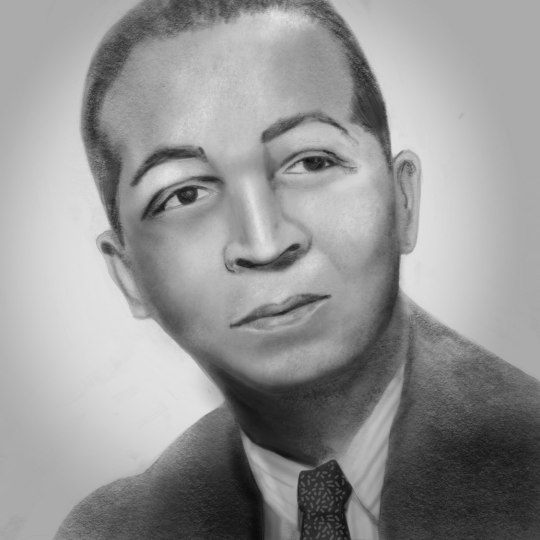
Lloyd Hall is considered to be one of the pioneers in the world of food chemistry. A pharmaceutical chemist for Griffith Laboratories in Chicago who completed graduate school, Hall would be awarded over 100 patents and received multiple honorary doctorate degrees for his work.
Hall's main area of work came around the development of techniques to preserve food. Some of his most revolutionary patents included using "flash-dried" salt crystals that revolutionized meatpacking. He also introduced the use of antioxidants to prevent the spoilage of fats and oils in baked goods, and developed a process known as "Ethylene Oxide Vacugas," which could control the growth of bacteria and molds in food.
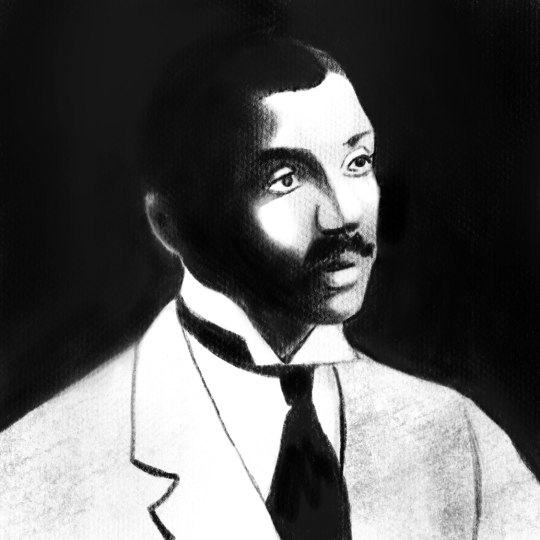
John Standard was an inventor instrumental in modernizing two pieces of kitchen equipment that virtually every household has today: stoves and refrigerators.
Refrigeration was a concept that was being researched as early as the 1830s, but mainly focused on using some sort of power. Standard's improvement to the fridge, patented in 1891, was an unpowered design that used a manually filled ice chamber as the central cooling unit.
Standard also made significant upgrades to the oil-powered stove, patenting one with a space-saving design in 1889 that could be used in applications like buffet-style meals on trains.

If you've worked in the food industry or any commercial transportation that required keeping stuff cold, you've likely seen the Thermo King brand somewhere in your lifetime. Frederick McKinley Jones was the founder of that company, and inventor of the first automated refrigerated system for trucks.
A skilled and gifted electrician and mechanic, Jones had patents for sixty different inventions across a wide variety of fields, including the portable X-ray machine, motion picture devices, and even medical storage units.
He's most known for the Thermo King, the refrigerated system he invented, because it allowed for fresh goods from around the world to be transported and sold in stores. Jones is essentially responsible for not just all refrigerated transport globally, but also the entire frozen food industry.

Known as the "Oyster King of New York," Downing was most known for his 19th-century restaurant, Thomas Downing's Oyster House. His oyster hall was legendary, with prominent figures like Queen Victoria and Charles Dickens having dined there.
Downing was born a free man, as his parents were freed by plantation owner John Downing. He grew up and was educated on Chincoteague Island in Virginia, and eventually made his way up to New York following the war of 1812. Like many other African-Americans in New York, Downing eventually went into the oyster business, opening his own oyster cellar in the 1820s.
Oyster cellars were the universal food of New York at the time (similar to hot dogs today), but many establishments weren't as trusted as Downing's. That's because he specifically catering it towards the fine dining clientele, with a large dining area, carpet, and chandeliers gracing the hall. Elaborate dishes like oyster-stuffed turkeys and a pan roast made with wine and chili graced the menu.
This, at the time, meant that African-Americans couldn't eat Downing's restaurant, but few were aware of the double life he led. Downing's basement was a key stop in the Underground Railroad, and as an abolitionist, he helped many that were escaping the South in search of freedom. He also led political efforts, funding schools for African-American children and leading the fight in desegregating New York's trolley system.
Downing was so regarded in New York that when he passed away in 1866, the New York City Chamber of Commerce closed so that its members could attend his funeral.
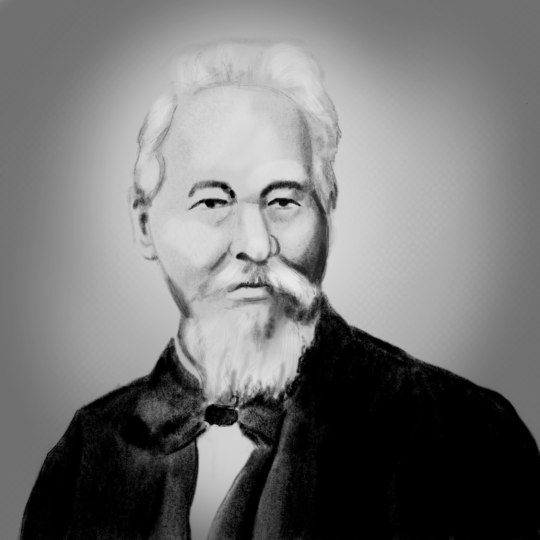
The sugar industry in the United States has Norbert Rillieux to thank for allowing them to become so powerful. Were it not for his inventions, making sugar would still be a time-consuming and dangerous process.
Originally, the sugar refinement process, known as "The Jamaica Train," was dangerous and expensive. Laborers (usually slaves) would transfer ladles of scalding hot sugar case juice between open boiling kettles, often resulting in scalding and terrible burns (anyone who's worked with sugar knows how painful it can be). The result was a dark syrup that was molded into cones and dried before being sold.
From 1834-1843, Rillieux developed a system for refining and crystallizing sugar using a much safer and controlled method, allowing the United States to eventually dominate the sugar market. His process is still used today for freeze-drying food, pigments, and other food products.
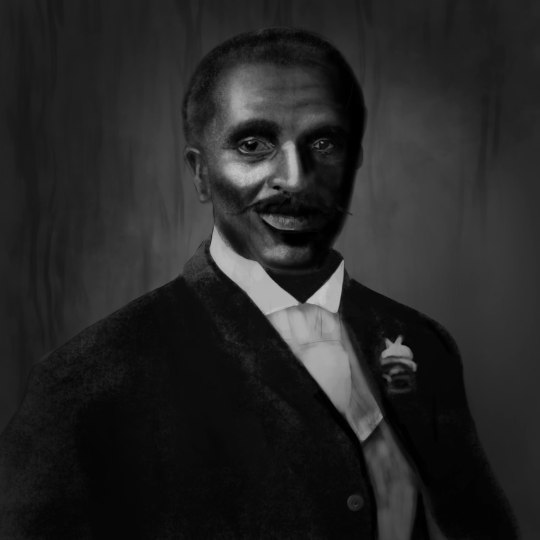
Many people know George Washington Carver for the myriad of products he invented that utilized peanuts or sweet potatoes. As an agricultural scientist working in the South, he was also a man responsible for helping revitalize much of the economy in that region.
Working out of the Tuskegee Institute in Alabama, Carver was a teacher and a researcher from the late 1890s until his passing in 1943. An early pioneer of crop rotation, he encouraged farmers to plant peanuts in the soil after harvest to replenish lost nutrients, helping farmers improve not just their livelihoods, but their diets as well.
Carver's research and work focused on revitalizing soil and maximizing plant production while keeping costs to a minimum. Outside of agriculture, he was a massive promoter of racial equality, and massive advocate of peanut oil as a potential treatment for polio. While never proven, the claim was widely circulated in media, and eventually turned into a "Peanuts for Polio" fundraising effort that helped raise money for medical care and benefits for children affected with the disease.
Following Carver's passing, then-Senator Harry S. Truman sponsored legislation that would lead to the construction of the George Washington Carver National Monument. It was the first-ever national memorial to an African-American.
#16 Black Innovators Who Changed Food Forever#Black Food#Black Food Innovaters#Food#Black Food Science#Black History#Black LIves Matter#Youtube
34 notes
·
View notes
Text

Midleton Whiskey Very Rare Vintage Release 2024
The Midleton Very Rare 2024 Vintage Release is an exceptional blend of the finest single pot still and single grain Irish whiskeys, crafted by Master Distiller Kevin O'Gorman. This edition celebrates the 40th anniversary of the Midleton Very Rare series and was released on February 28, 2024.
This whiskey is a must-have for any serious whiskey collector. It is sure to become a treasured possession and serves as a perfect example of the Midleton Distillery's craftsmanship and expertise.
Cask type: First-fill and refill American whiskey barrels.
3 notes
·
View notes
Text
Kentucky
Bourbon making can be traced back to the late 18th century, standing as a uniquely American spirit known for quality and craftsmanship. Because of specific and high standards, bourbon tastes different than other whiskies such as Scotch, Irish, Canadian or Tennessee whiskey. Bourbon must be made in America and predominantly from corn. This makes bourbon unique among all other styles of whiskey. Furthermore, bourbon is never stored in used barrels. New oak barrels age bourbon slowly over time so it garners a deep amber color and rich flavors as it matures. No artificial colors or additives are ever added. Remember, all bourbons are whiskeys, but not all whiskeys are bourbons.
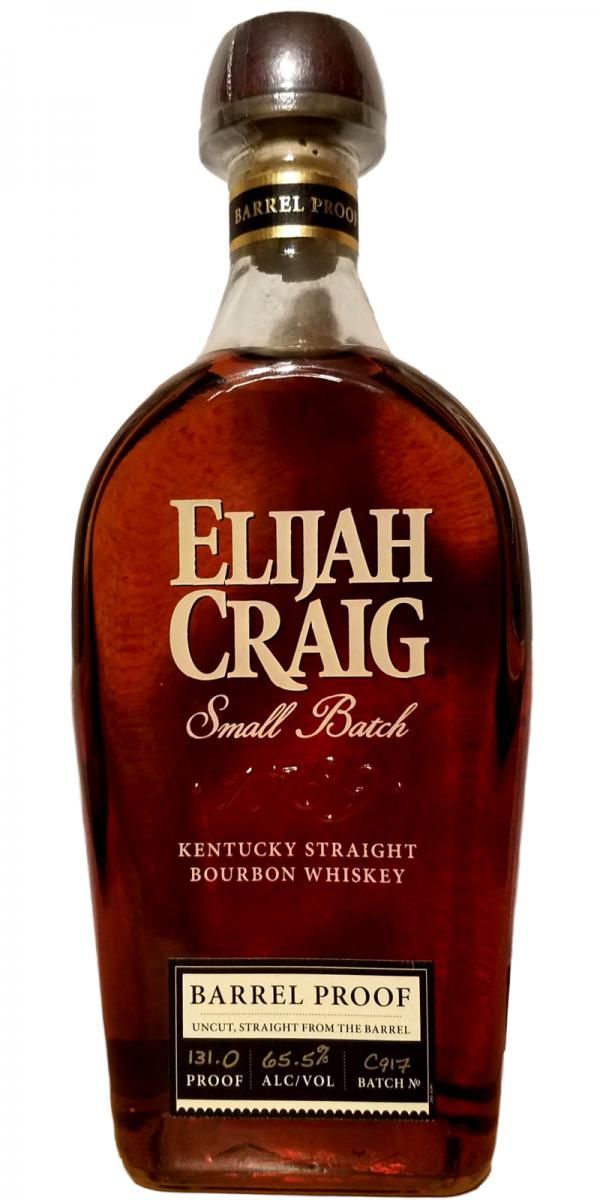
#window Jane bourbon#whiskey distillery near me#four roses whiskey#garrison brothers bourbon#american whiskey#kentucky bourbon#bourbon whiskey#bourbon whiskey near me#Glendronach 15
2 notes
·
View notes
Text

Stagg built the most dominant American distillery of the 19th century, during a time known as the Gilded Age of Bourbon. Uncut and unfiltered, this robust bourbon whiskey ages for nearly a decade and boasts the bold character that is reminiscent of the man himself.
While the retail price for the collection is $99 per bottle, the secondary market has continued to push the price threshold. Some bottles have been sold for over $700. While the George T. Stagg has been the powerhouse of the collection, and a fan favorite,
@bourbonmeek
2 notes
·
View notes
Link
Discover why Pinhook Bourbon War 7 YO is a must-try for every whiskey lover. From its floral and stone fruit notes to the smooth rye spices, this Kentucky gem offers a symphony of flavors. Plus, explore other exquisite whiskeys like Broad Branch Straight Rye and High West Campfire. Ready to elevate your whiskey game? Find out more now! #WhiskeyLovers #CraftWhiskey #BourbonTrend
0 notes
Text
Corsair Rasputin / Corsair Triple Smoke
Review by: TOModera Corsair Distillery is an interesting outfit. And to continue on my American Whiskey kick, they’re next up on the chopping block. First up, thanks to tvraisedme for the sample of Corsair Rasputin, and mentel42 for the Corsair Triple Smoke. The story behind the distillery is one made out of every homemakers dream book (with ponies on it). Two guys try to make a bio-diesel…

View On WordPress
#American Whiskey Review#Corsair Artisan Distillery#Kentucky#Rated 0-49#Rated 75-79#Tennessee#Virgin Cask#Whisky Review
0 notes
Text

Really smooth combination. Pepe Carillo La Historia cigar ~ really well crafted, smooth draw, lots of smoke. American Badass whiskey by Garage Oil distillery, South Carolina. Smooth sipping, no tongue burn whatsoever. Highly recommended.
12 notes
·
View notes
Text

Citizen: My Life After the White House by Bill Clinton
In this account of his years after leaving office, Clinton is a hyperactive and loquacious presence, helping out in disaster zones and pontificating about public service – but he reveals little about his private life
American presidents are supposed to renounce pomp and disappear into private life when their term ends. George Washington enjoyed sampling the whiskey produced by the distillery at his Virginia plantation, while George W Bush currently amuses himself by clearing underbrush on his Texas ranch. Bill Clinton, aged only 54 when he left office in 2001, spurned bucolic oblivion; as he says with scriptural solemnity: “I didn’t think my work here on Earth was finished just yet.” Although he calls his memoir Citizen to signal his reduced status, he admits to hankering after his years as a conqueror, with military bands that struck up Hail to the Chief as his personal anthem whenever he strode into a room.
Because the presidency has grown ever more undemocratically monarchical, Clinton toyed with a possible succession. His wife’s candidacy in 2016 offered him the prospect of returning to the White House as her First Gentleman, and his daughter, Chelsea, might have exotically extended the family line: in 2002 Muammar Gadaffi suggested marrying her to his son and thereby “launching a dynasty”. But Hillary lost to Trump, Chelsea nixed the proposal, and instead Clinton has incorporated himself. He set up the Clinton Foundation, kept it flush with his lecture fees and soon presided over an empire of eponymous acronyms - the CCI (Clinton Climate Initiative), the CDI (Clinton Development Initiative), the CGI (Clinton Global Initiative), the CHAI (Clinton Health Access Initiative), and so on to the end of the alphabet.
He is frank about his initial motive for keeping busy. “I had to start making money,” he admits, mostly to pay the legal bills accrued during the Republican attempt to impeach him over his entanglement with Monica Lewinsky. Yet for this hyperactive man, being busy is its own reward. In the first section of his book he hurls himself into disaster zones like an ambulance-chasing attorney, usually taking celebrities such as Oprah Winfrey or Sean Penn along for the adrenalised ride. “I volunteered to help,” he says after hearing about an earthquake in Gujurat. With the Asian tsunami he teasingly stands on ceremony: “My staff called the White House to say I wanted to help.”
On the ground he is generous with his presence, reporting that at an Indian hospital he “visited with the patients and families who wanted to say hello”. In a Rwandan village he and Chelsea helpfully mime the filtration process of murky water that would benefit “countless millions of poor people”. A Puerto Rican hurricane supplies “the most fun” when Lin-Manuel Miranda lays on a performance of Hamilton; George Clooney, despatched by Nespresso to encourage ruined coffee planters, joins the party. After a consoling sortie to the battered Maldives, Clinton resumes a triumphal junket “to China, Japan, South Korea and Taiwan to promote my autobiography”. Other countries expecting seismic upsets are tipped off about his likely availability: “I’ll show up if I can.”
Having shown up, Clinton can be counted on to speechify. Although he believes that “the world doesn’t need another talkfest”, he is unstoppably loquacious. With Kim Jong-il he picks over “the usual stilted talking points” and in Bosnia he delivers terse “remarks”. In Accra, however, boosted by loudspeakers at a rally in an open square, he holds forth to a million auditors, “the largest crowd I’ve ever addressed”. He mistakenly assumes that George HW Bush is equally gabby and obliges him “to talk too long to too many people” on one of their humanitarian tours; George W Bush, raising funds for yet another hurricane, astutely warns Clinton to be “short and sweet”. Only once is he both out-talked and unmanned. As a student at Oxford, invited to tea at a women’s college, he likens himself to the ball boy at a testicular tennis match, exhausted by “the verbal serves and volleys that flew across the net”.
Garrulous he may be, but Clinton is convivial without being confidential. On a mission to extricate two journalists held hostage in North Korea, he remembers to be diplomatically expressionless in the official photograph and even rehearses not smiling. This long book about himself has the same ultimately dreary impersonality. “We all experience good times and grief,” he says, shuttering his private life. He bridles when accused by an interviewer of not apologising personally to Monica Lewinsky: didn’t he express generalised regrets in a public forum during a meeting with “faith leaders” at the White House? It was not, he says, “my finest hour”, referring to the tetchy interview, not to his exploitation of an infatuated intern.
Autobiographical anecdotes are twisted into what Clinton calls “teachable moments”, as when his reminiscence of an outdoor toilet in his Arkansas boyhood, “attractive to snakes in the summer”, introduces a homily about “productive grassroots partnerships with business”. The snakes must have been real enough but the grass they slither in is merely metaphorical. A single specimen of candid unpolitical speech is brattishly uttered by the three-year-old Chelsea when introduced to George HW Bush at his home in Maine. “Where’s the bathroom?” she asks her host.
No wonder that Clinton, always on guard against intimate leakages, so enjoyed collaborating with James Patterson on two thrillers published in 2018 and 2021, in which successive US presidents shed their inhibitions and enjoy careers as action heroes: the first anonymously slips out of the White House to thwart a cyberterrorist, the second ventures to Libya to rescue his kidnapped daughter. Clinton warns that climate change will eject us into “a real-life sequel to the post-apocalyptic Road Warrior movies”, but that swashbuckling apparently appeals to him. Politics, by contrast, seems as deadly dull as the language he uses to describe it. America, he says, has gone “off the rails”, although responsible commentators try “to keep the train on the tracks”: is he angling for honorary membership of Aslef?
Handed a microphone, Clinton is eager to share “an overview of how I view the world”, although these omniscient surveys mostly consist of faded neoliberal truisms. At the end of his book, this overview of the world is replaced by an underview of the universe as he scrutinises “the far reaches of outer space” at a scientific observatory in Hawaii. The interstellar void seen through the telescope makes him ask, with a shudder that the banal phrasing fails to muffle: “What does it all mean in the grand scheme of things?” His foundation, its funds and its global good works suddenly shrivel, and Clinton rebukes those who pursue “worldly political power” with a misplaced messianic zeal.
Then a few lines later he resumes pontificating about public service, and after a possible glimpse of a “creator God” out there in the darkness, he concludes by insisting “I’m happy.” This was written before the recent election; I’ll bet he no longer feels quite so cosmically complacent.
Daily inspiration. Discover more photos at Just for Books…?
4 notes
·
View notes
Text
Whiskey House of Kentucky (Whiskey House), the newest and most advanced distillery in the United States, announced operations officially began yesterday, July 1, as initially projected. Located on a 176-acre campus in the T.J. Patterson Elizabethtown Hardin County Industrial Park, Whiskey House is the most sophisticated, technically advanced producer of custom bourbon, rye, and American whiskey in the United States.
6 notes
·
View notes